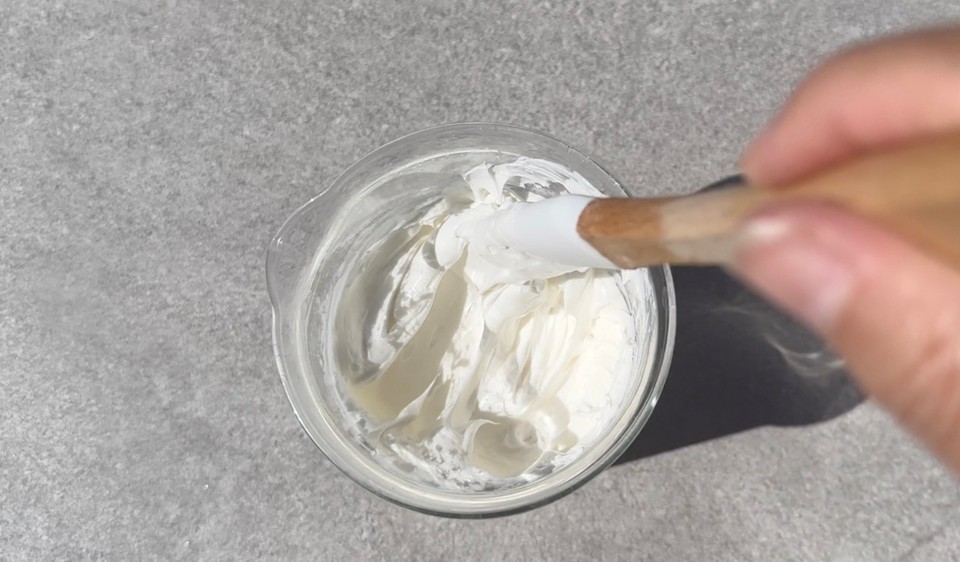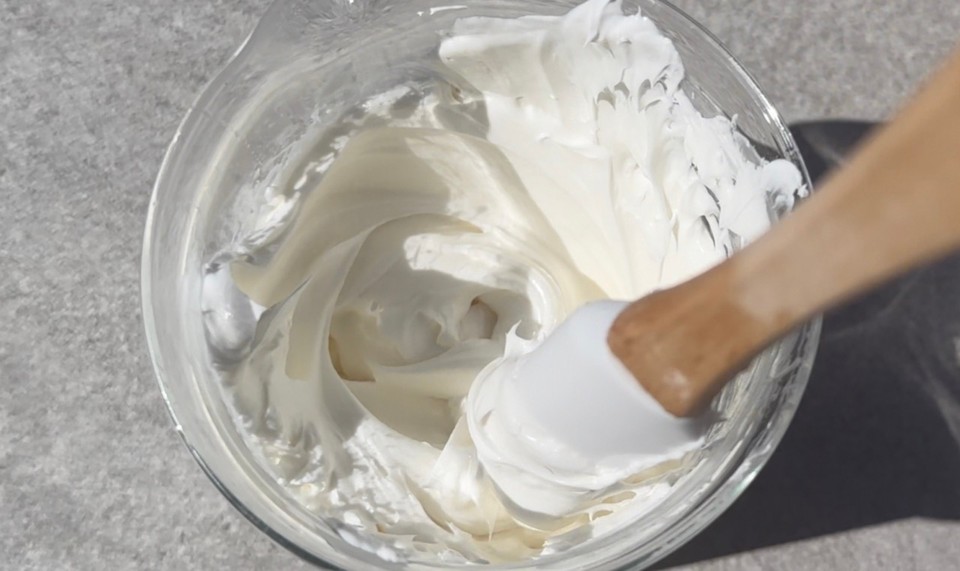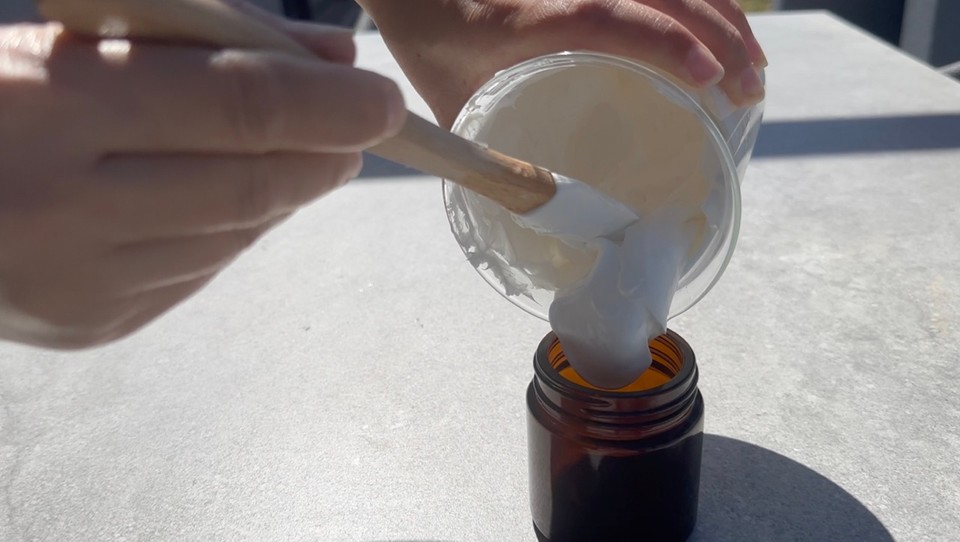Skin Food Body Butter
| Phase | Ingredient | Percent (%) | Weight (g) |
|---|---|---|---|
| Phase A | Xanthan gum | 0.3 | 0.3 |
| Glycerin | 8 | 8 | |
| Distilled water | 33.9 | 33.9 | |
| Allantoin | 0.4 | 0.4 | |
| Phase B | Kokum butter (INCI - GARCINIA INDICA SEED BUTTER) | 10 | 10 |
| Glyceryl Stearate Citrate | 8 | 8 | |
| Cupuaçu butter (INCI - Theobroma Grandiflorum Seed Butter) | 6 | 6 | |
| Stearic acid | 2 | 2 | |
| Avocado oil (INCI - Persea Gratissima (Avocado) Oil) | 22 | 22 | |
| Phase C | Pentylene Glycol | 2 | 2 |
| Raspberry extract (INCI - Glycerin, Rubus Idaeus Fruit Extract) | 2 | 2 | |
| Malva flower extract (INCI - Glycerin, Malva Sylvestris Flower Extract, Water) | 2 | 2 | |
| Betaine powder (INCI - Betaine) | 1 | 1 | |
| Citric acid | 0.2 | 0.2 | |
| Preservative Cosgard (INCI - Benzyl Alcohol, Dehydroacetic Acid, Aqua) | 1 | 1 | |
| Phase D | Fragrance oil (berries) | 1 | 1 |
| Vitamin E (INCI - Tocopherol) | 0.2 | 0.2 |
When I used to buy creams and lotions, I tried to find “clean” and more sustainable brands. One of these brands that I like is Weleda. I saw they came up with an emulsified body butter called “skin food body butter”. I’ve checked the ingredients and decided to make something similar inspired by Weleda’s product.
The difference between a body butter and an emulsified body butter is the presence of water. Regular body butter contains only “oil-based” ingredients (therefore, it does not need a preservative), while emulsified body butter contains “water-based” ingredients. The added water makes the emulsified body butter much less greasy and oily.
The emulsified body butter has a very thick and dense texture, similar to regular body butter. Still, it is fast absorbing and leaves the skin soft and moisturized without the oily residue you get from regular body butter.
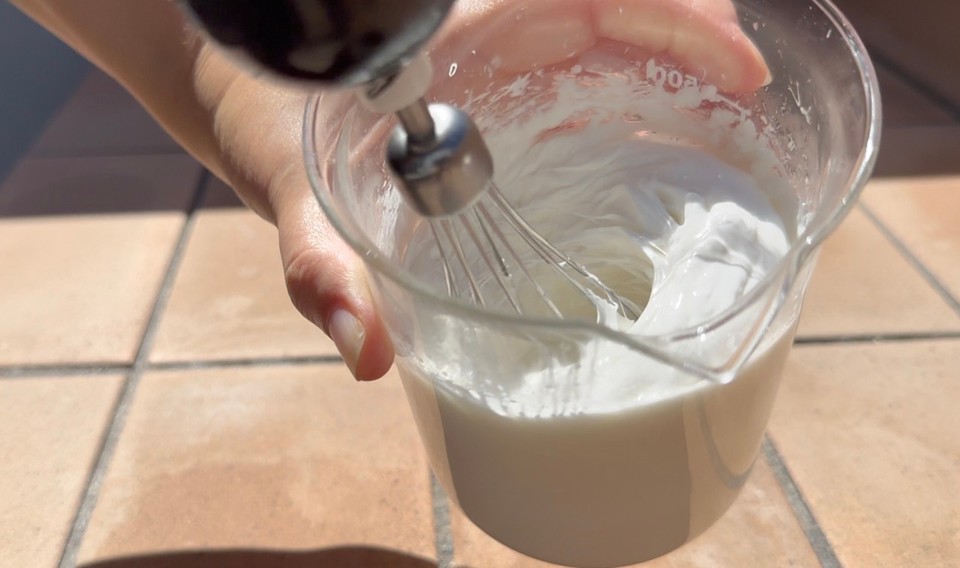
In general, an emulsified body butter is more or less a very dense, thick body cream full of oils and butters in a higher percentage than a regular body cream.
I’ve shared several formulas for emulsified body butter on this website: Silky Smooth Emulsified Body Butter, Naturally Colored Emulsified Body Butter, and Emulsified Body Butter.
If you want to read more about the basics of lotions and cream making, please check this post here.
Back to this specific emulsified body butter, I’ll start by going through the oil phase ingredients: I’ve changed the butter and used kokum butter with cupuaçu butter in my formula. The original product uses cocoa butter and Shea butter. You can use cocoa and Shea butter or mango butter to replace the butter in this formula.
I’ve used kokum and cupuaçu butter because most body butters use cocoa butter and Shea butter, and I wanted to change a little and make something with different kinds of butter.
I’ve used avocado oil for my carrier oil to replace the sunflower oil from Weleda’s.
Avocado oil is rich in fatty acids, including oleic and linoleic acids, which are excellent for moisturizing the skin. The fatty acids in avocado oil can help strengthen the skin's natural barrier. Avocado oil contains vitamins A, C, and E.
Avocado oil also contains sterolins, which can help boost collagen production in the skin.
You can use other carrier oils such as: sunflower oil, sweet almond oil, rice bran oil, cotton seed oil, macadamia oil, hazelnut oil, argan oil, or olive oil.
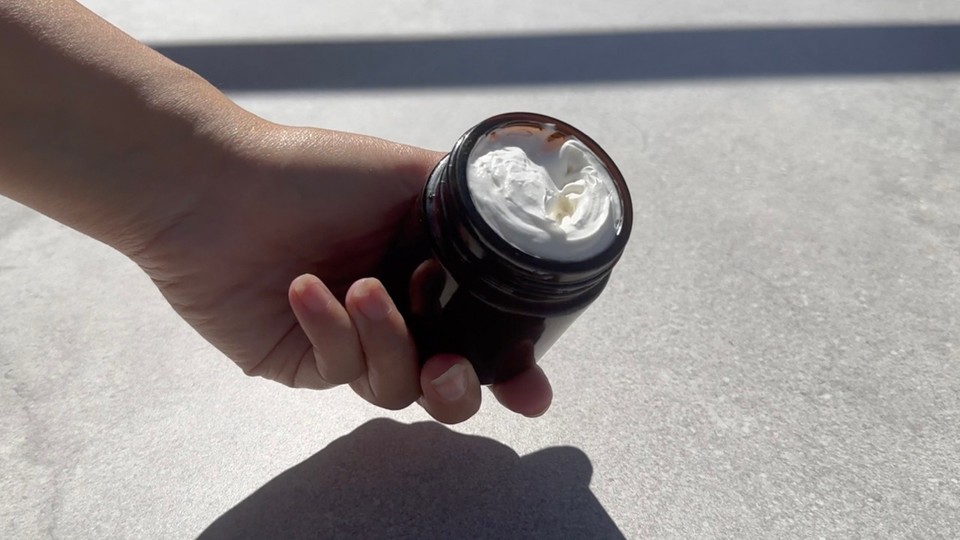
For my emulsifying wax, I chose the same one from the original product: Glyceryl Stearate Citrate. I bought Glyceryl Stearate Citrate, which is derived from natural sources. You can check this with your supplier (if you need to check the ingredients' origin, you can check the datasheet from the supplier).
Glyceryl Stearate Citrate creates a smooth, silky texture in creams. It can also assist in retaining moisture and promoting hydration to the skin.
You can use different emulsifying waxes, such as Olivem1000 or Polawax NF. Remember that each emulsifying wax has other properties and will have a different texture and consistency. You can read more about different types of emulsifying wax here.
Try this All-purpose cream formula if you prefer a more light body cream.
For my water phase, I’ve used the same ingredients as the Weleda’s product, with only one additional ingredient that I decided to add: the allantoin.
I love allantoin. Allantoin can calm and soothe irritated skin, keep the skin moisturized, gently exfoliate to create a smoother texture, and is well-tolerated by most skin types. Also, it is a non-expensive ingredient that can add many benefits to the final product. To fully incorporate allantoin, it needs to be heated to at least 50 degrees Celsius. I added the allantoin to the heated water phase and checked that the temperature was right for it to be fully dissolved into the water. You need to ensure that the allantoin is fully dissolved in the water by checking with a thermometer that it reached at least 50 degrees Celsius.
If you don’t have allantoin, skip this ingredient and add the amount to the glycerin.
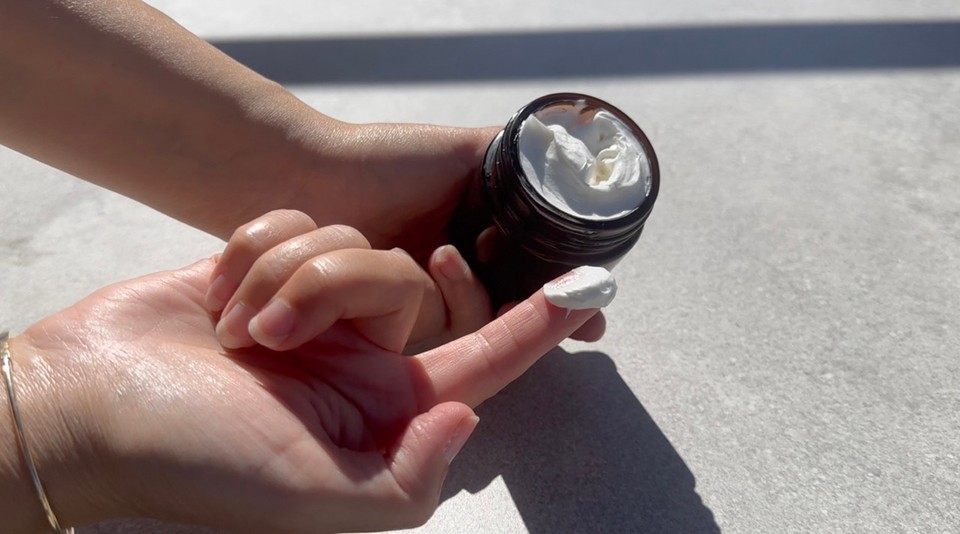
I combined a few extracts with betaine and citric acid for my phase C.
The citric acid is added first to lower the PH of the final product and second for its exfoliating and brightening properties that help to achieve smoother skin. If you’re making this formula without changing your chosen ingredients, you should get a final PH of 5.5.
If you change some ingredients, you’ll need to check the PH and adjust if necessary. To read more about PH adjustment, please check this post here.
In phase C, I used Pentylene Glycol, also one of the ingredients in Weleda’s product. Pentylene Glycol is a humectant that also helps to boost the preservative and can enhance the penetration of other ingredients into the skin, improving the overall performance of the body butter.
If you don’t have Pentylene Glycol, you can use glycerin instead.
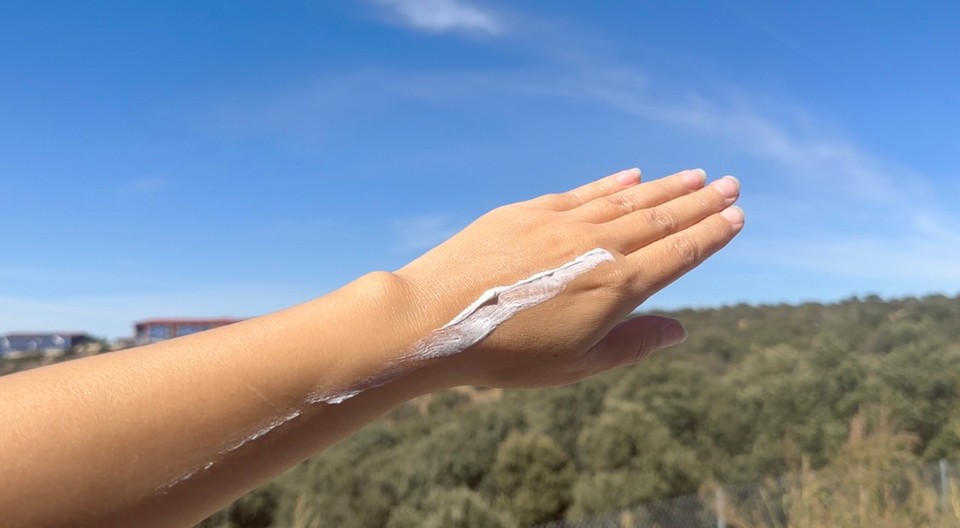
The original product used some botanical extracts such as rosemary and calendula. I used malva extract and raspberry extract. You can use the same extracts as Weleda’s product or other botanical extracts.
Check before adding extracts that they are compatible with the other ingredients. You can also skip the extracts and add the amount of the extracts to the distilled water. In phase C, I added betaine, as in Weleda’s product.
Betaine helps to retain water and maintain hydration, which is an excellent addition to a body or face product.
You can replace the betaine with sorbitol or panthenol.
Betaine comes as a powder, so I dissolve it with the other ingredients from phase C (water-based ingredients).
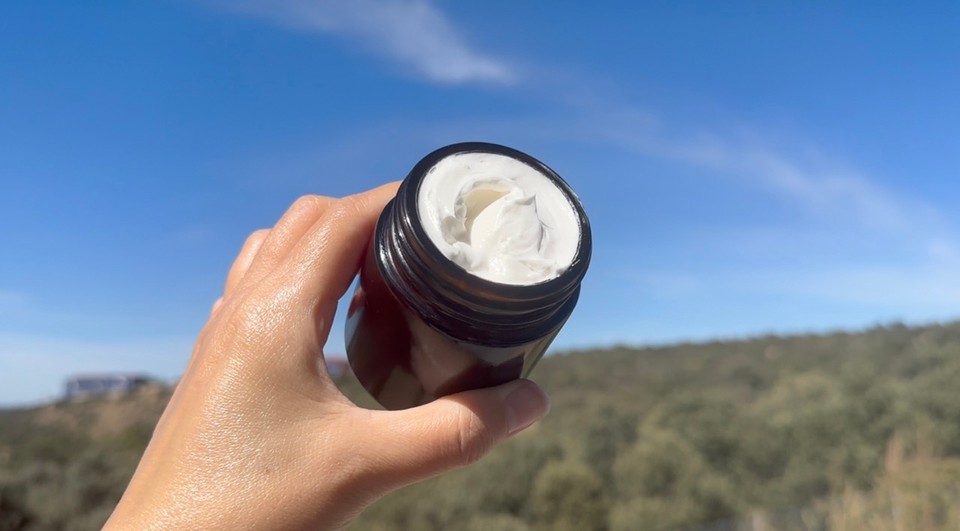
Lastly, in phase D, I added vitamin E as an antioxidant, preservative, and fragrance oil. You can skip vitamin E if you have none and add this amount to the carrier oil in phase B.
You can use essential oil instead of the fragrance oil. Check the maximum usage rate for your chosen essential/fragrance oil and use skin-safe ones.
If you use a different preservative, use the recommended usage rate provided by your supplier. If you need more than 0.8% for 100g, subtract the amount added to the preservative from the distilled water in phase A.
You can make an unscented product. If you make an unscented product, skip the fragrance oil and add the amount to the avocado oil instead.
You can use different scents of fragrance or essential oils. Just make sure to check you are using skin-safe ones and follow the usage rate provided by the supplier.
Ensure all your tools are clean and sanitized before making any cosmetic product.
Use the calculator to adjust the amount you want to make.
Method:
- In a heat-resistance beaker, add the ingredients from phase A. Make a slurry by combining the gum and glycerin. Then add the distilled water and the allantoin.
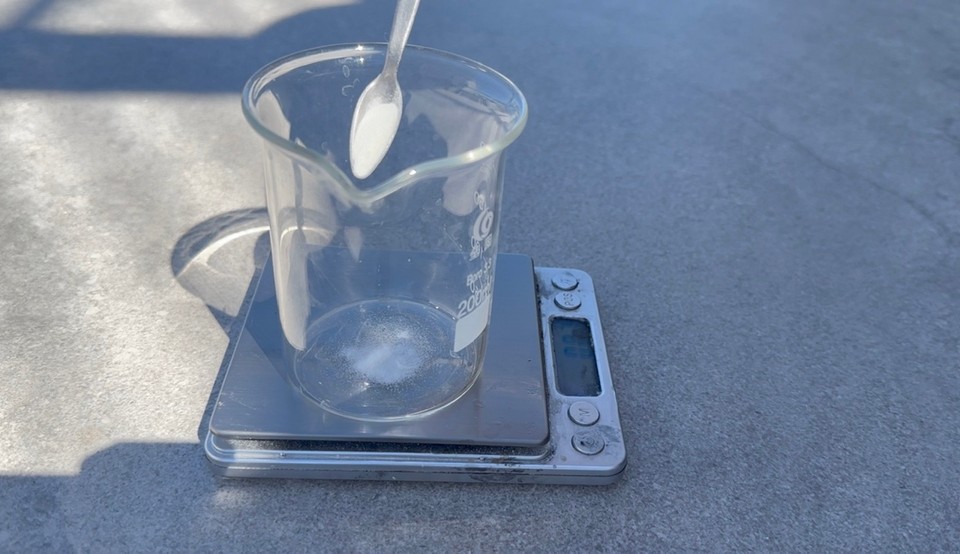
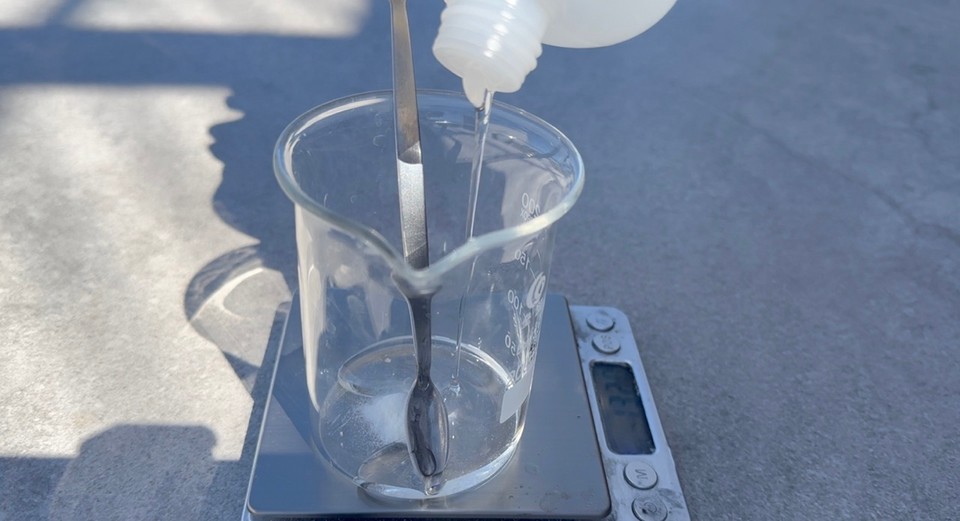
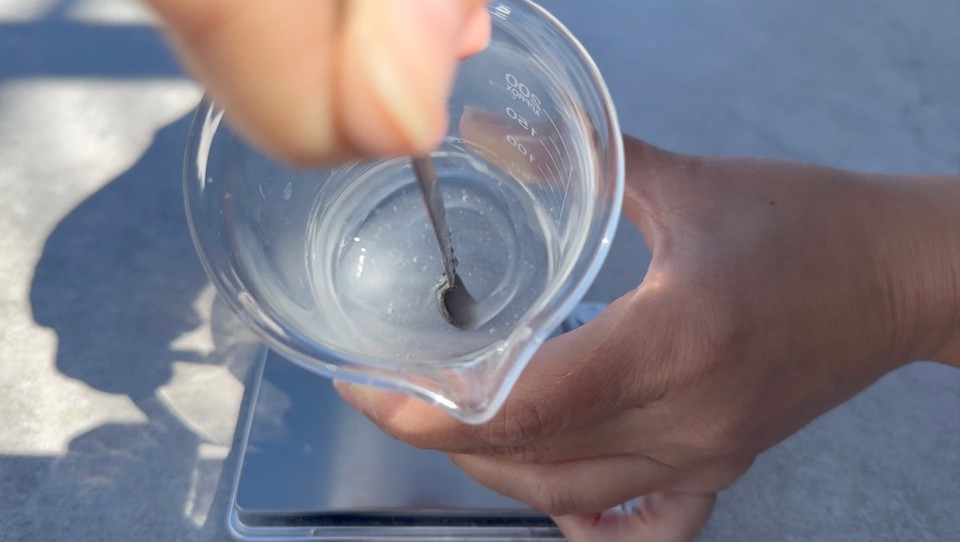
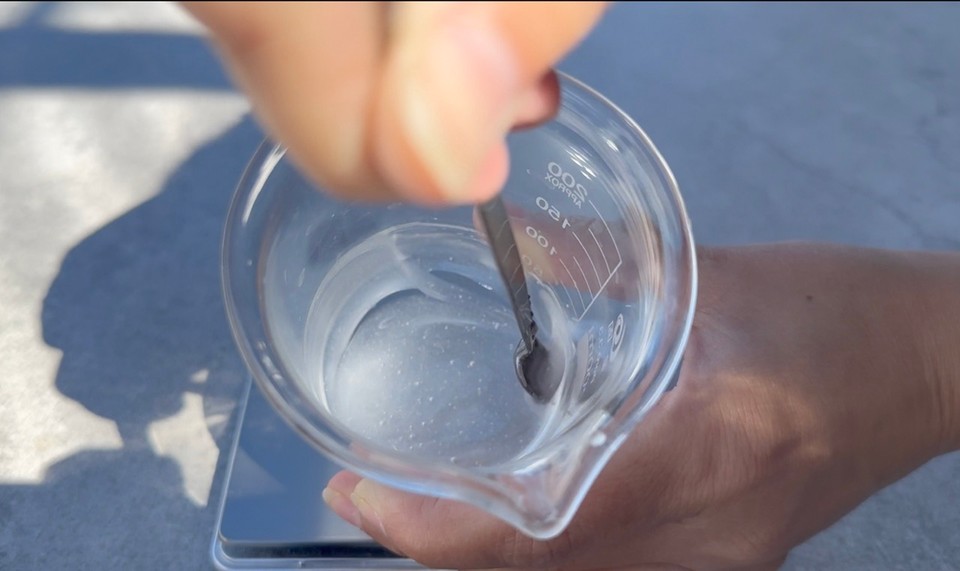
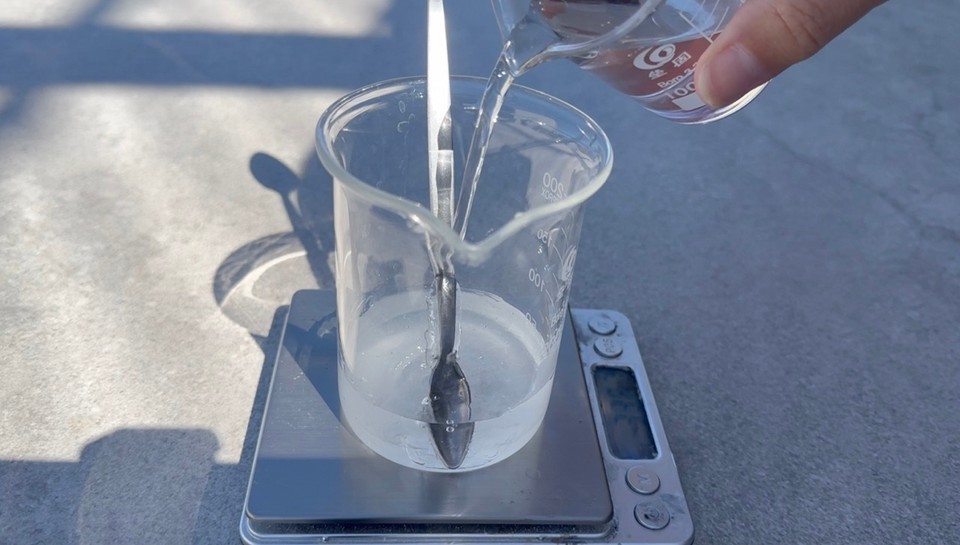
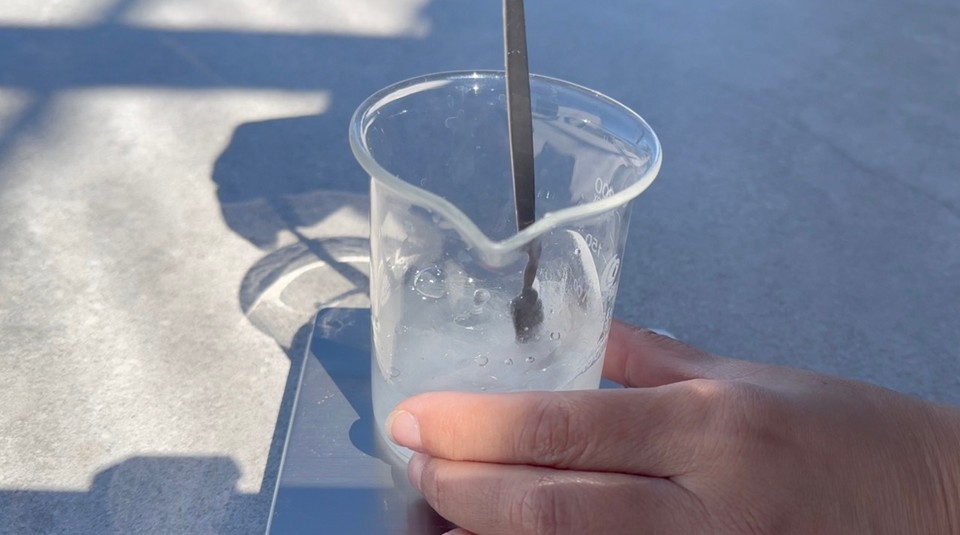
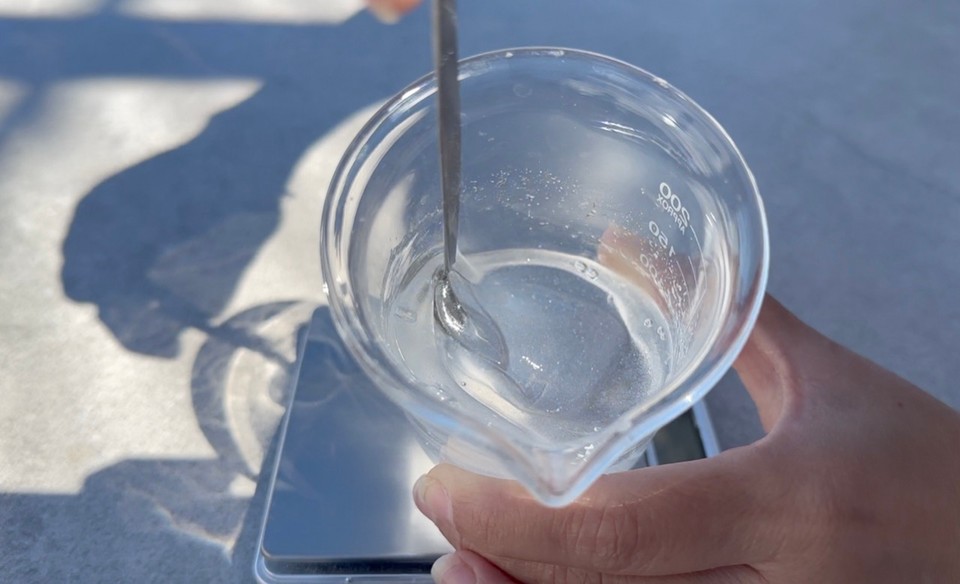
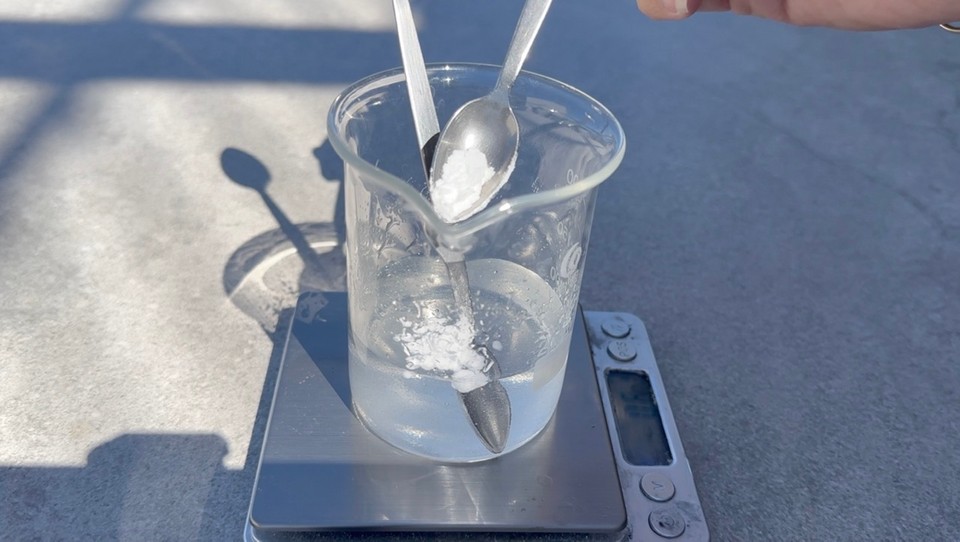
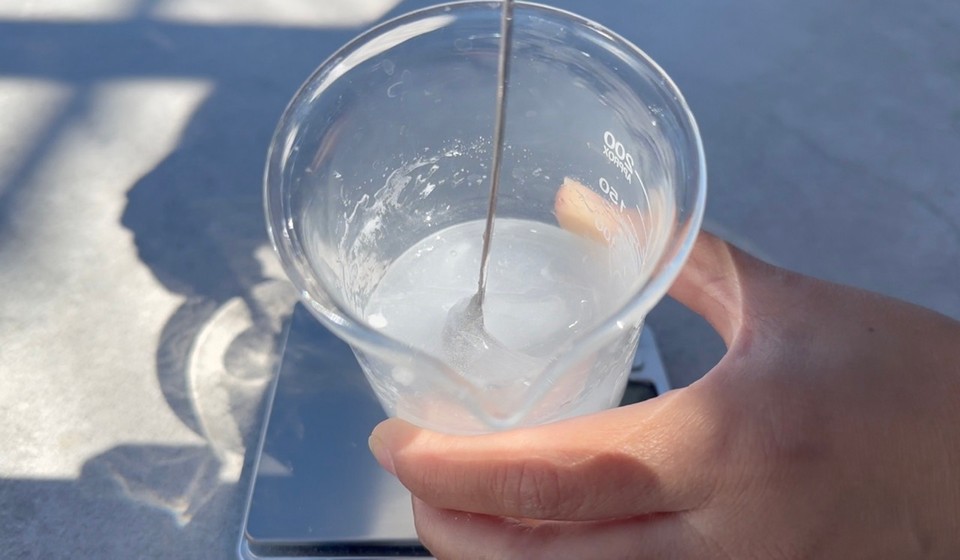
- In a different heat-resistance beaker, add phase B ingredients.
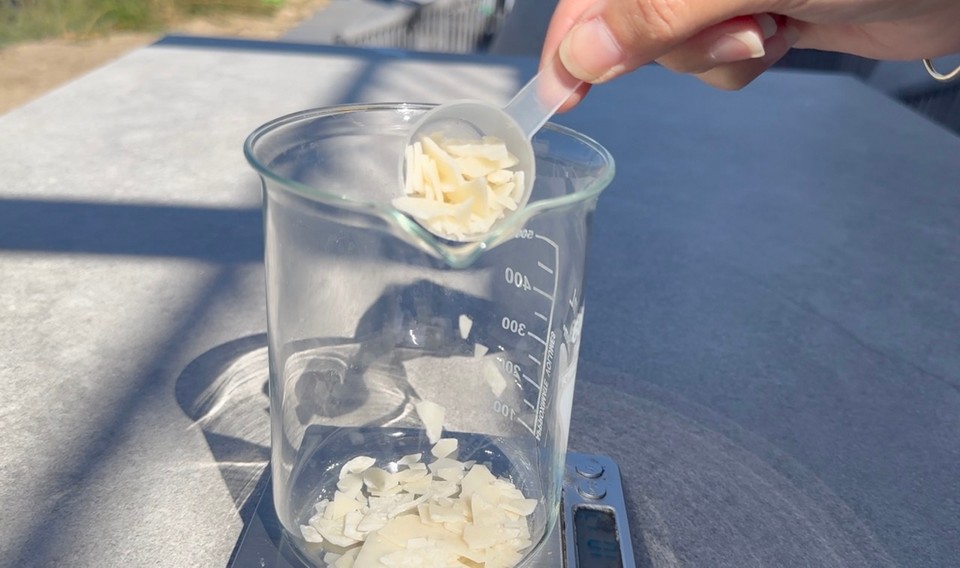

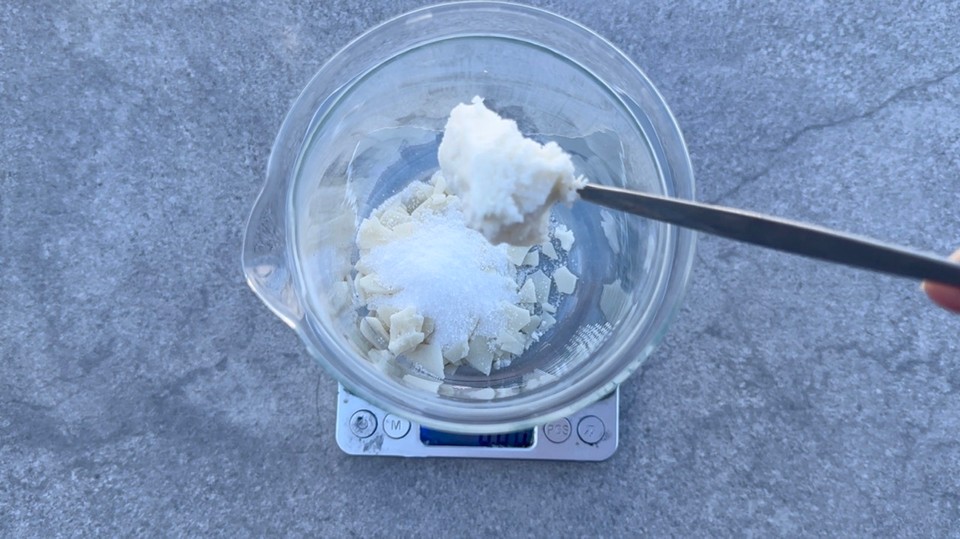
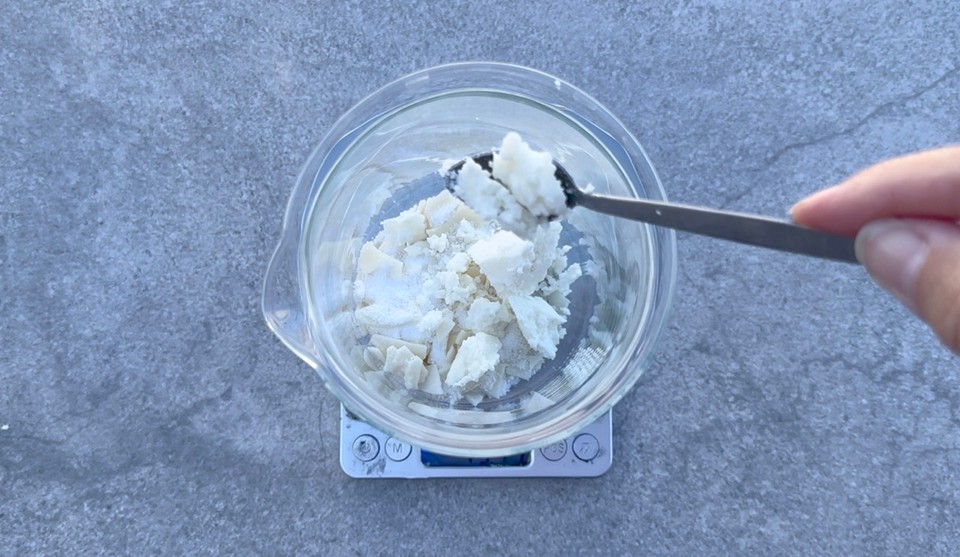
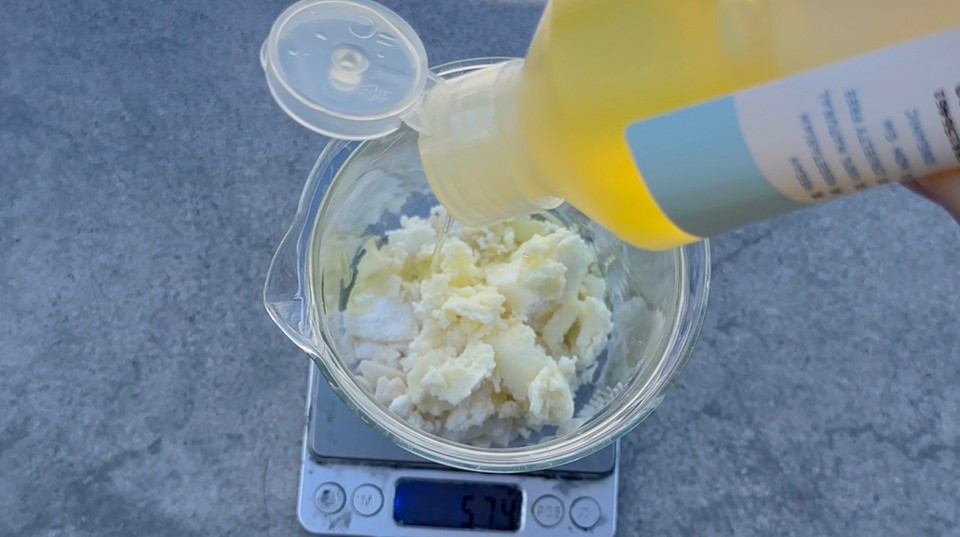
- Cover phase A beaker with aluminum foil to minimize evaporation. If you are making a larger amount (from 150g and up), scale your phase A before heating and write down the exact number. Then, after removing the heat, add the water that evaporated to reach the exact number of grams for phase A.
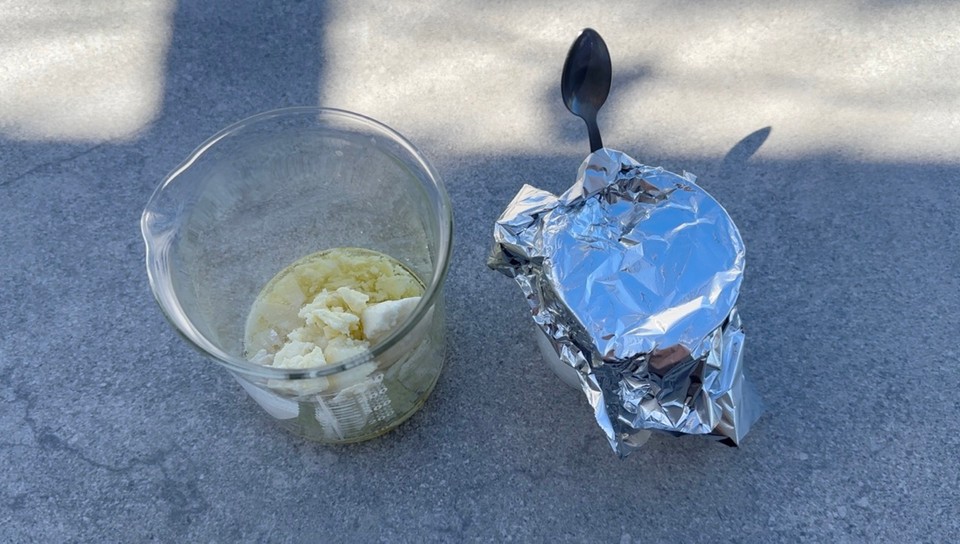
- Place phases A and B into a double boiler on medium heat. When phase A reaches 50 degrees Celsius, leave it for 3-4 minutes and remove it from the heat when it exceeds 50 degrees Celsius.
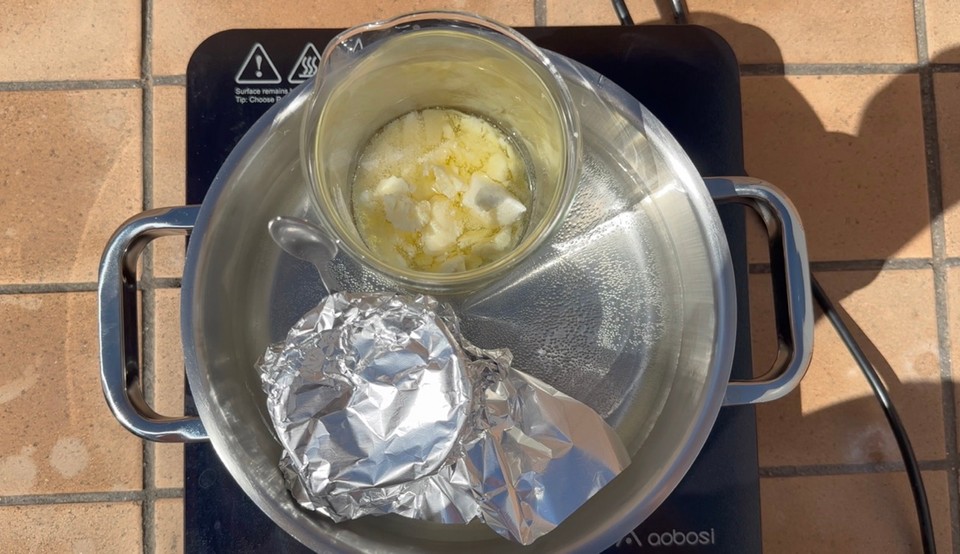
- While phases A and B are heating, prepare phase C in a different container. Add the betaine powder and the rest of the phase C ingredients and mix to dissolve the betaine. Set aside.
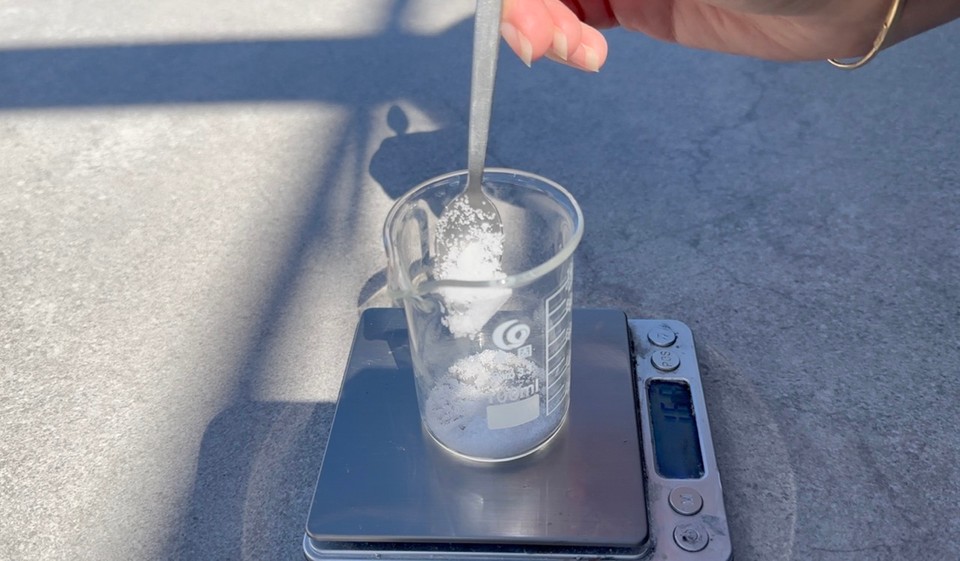
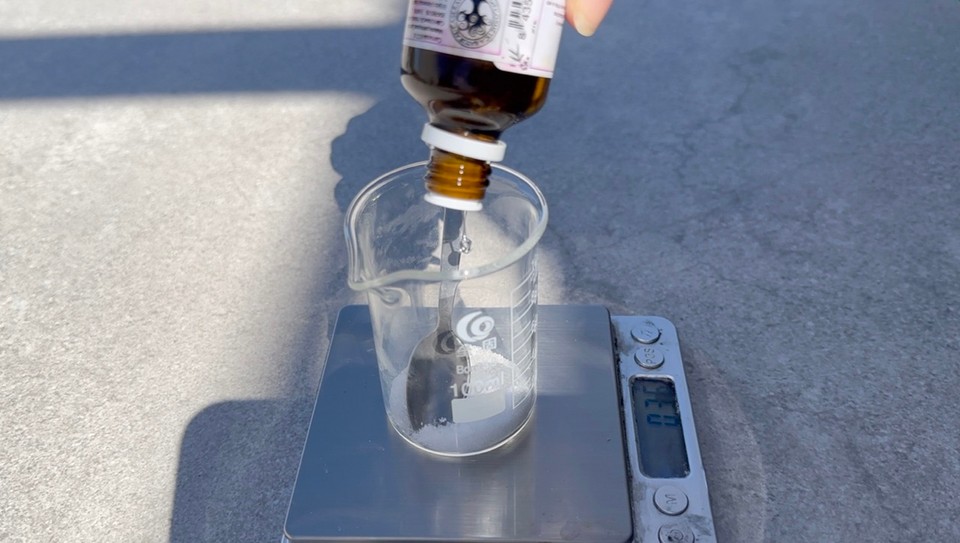
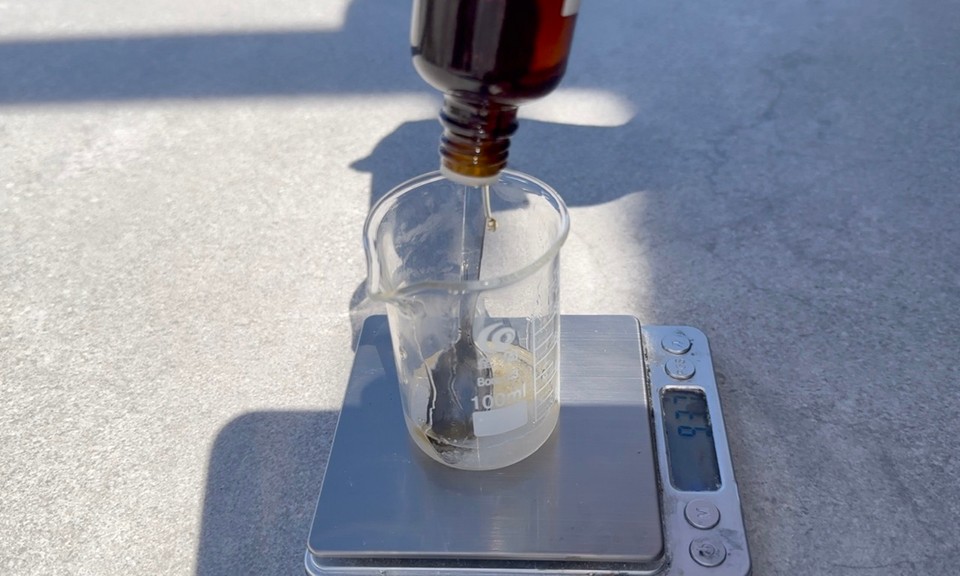

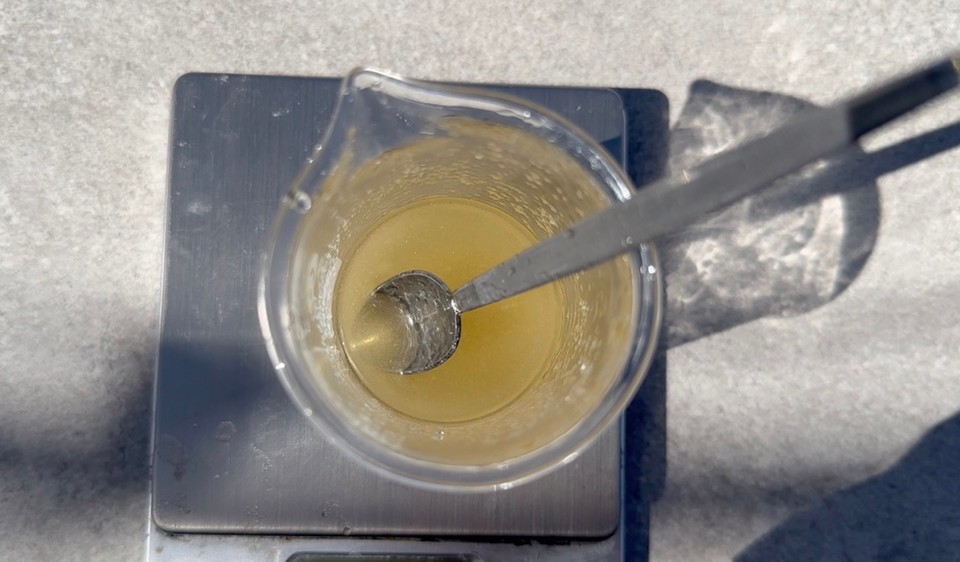
- After phase B has completely melted, remove it from the heat.
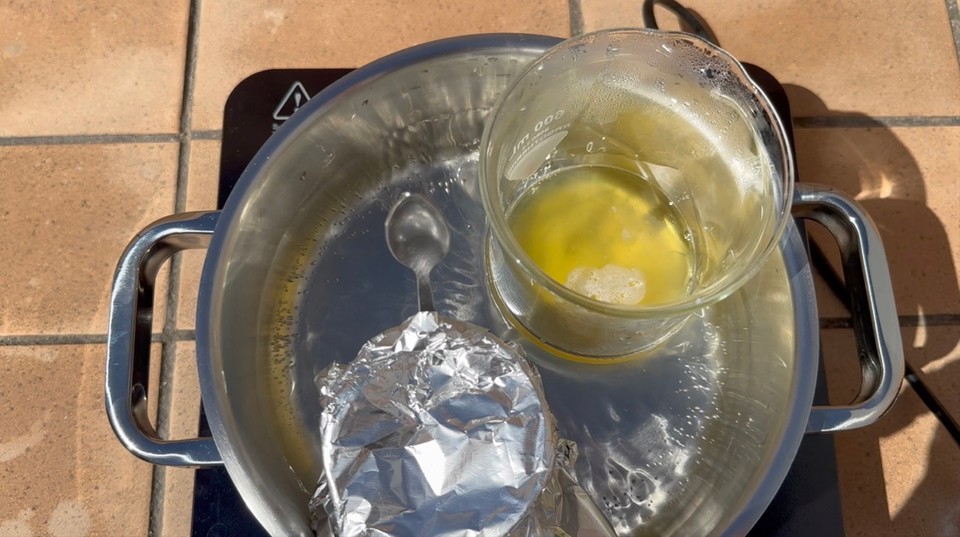
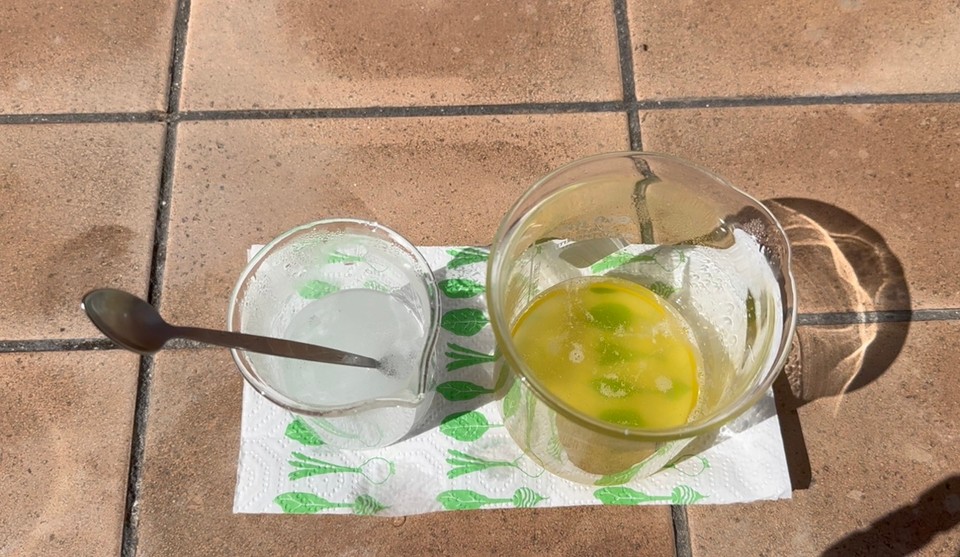
- Combine phases A and B. Mix with a high-speed blender or a homogenizer. I have used the whip tool of my blender to create a fluffy, airy consistency.



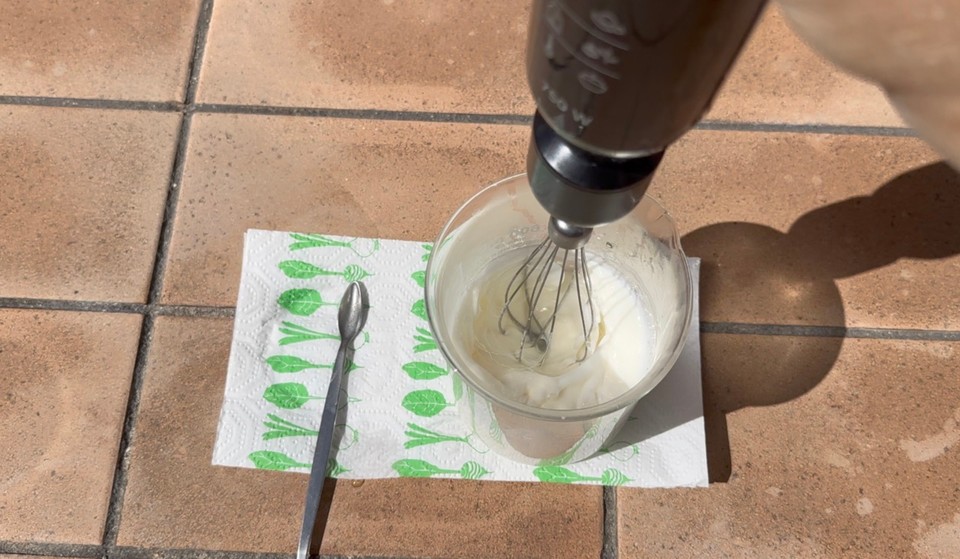
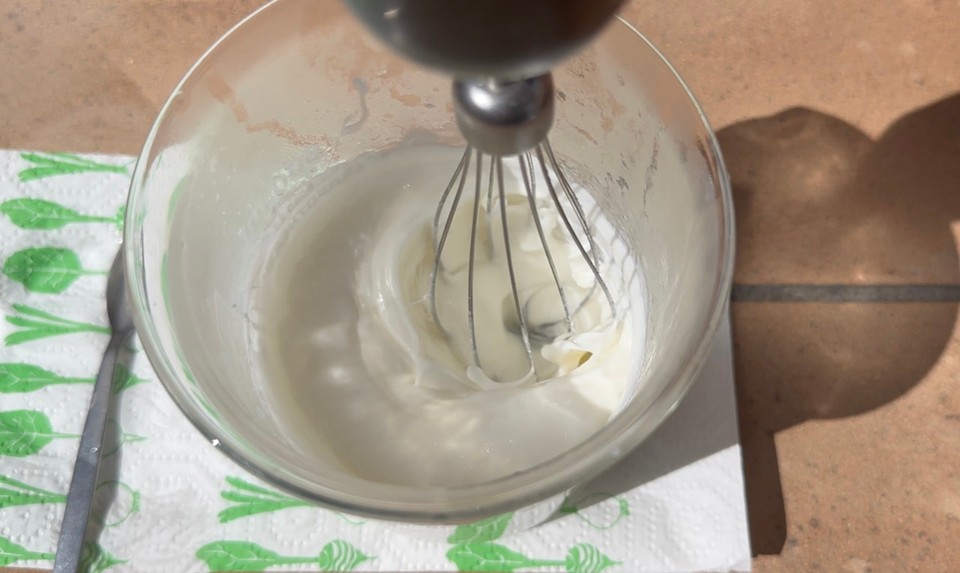
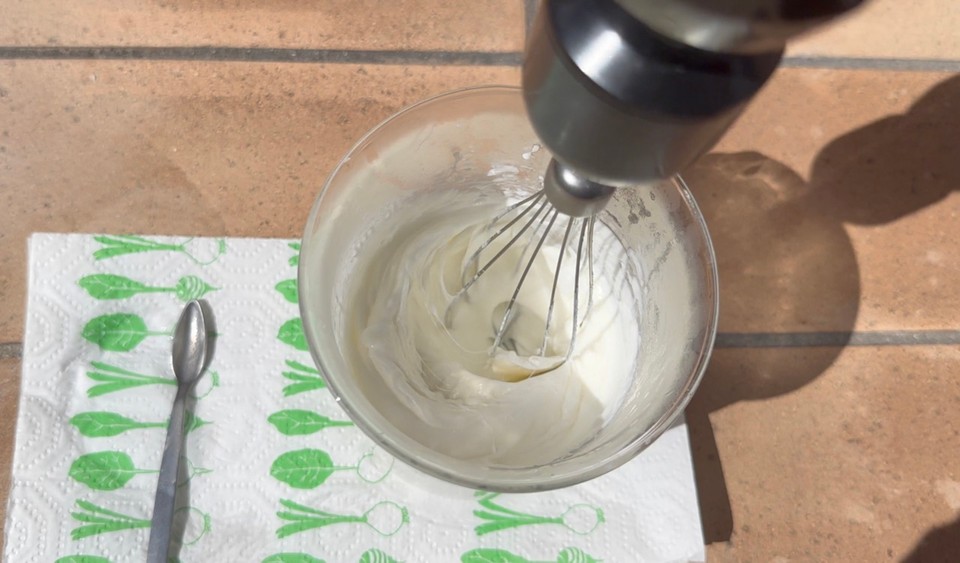
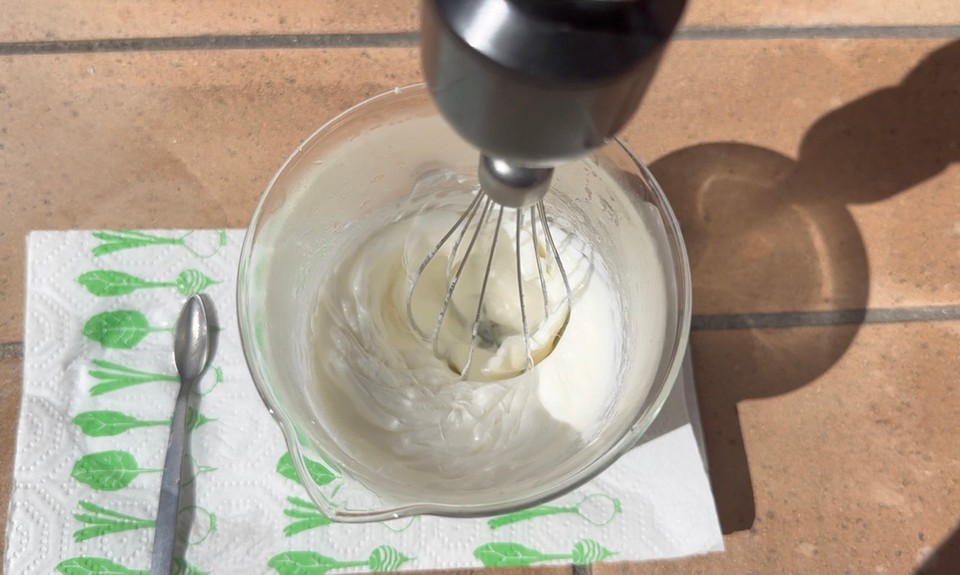
- Before adding phase C, let the body butter cool down to 40 degrees Celsius or less. Add phase C and mix to combine.
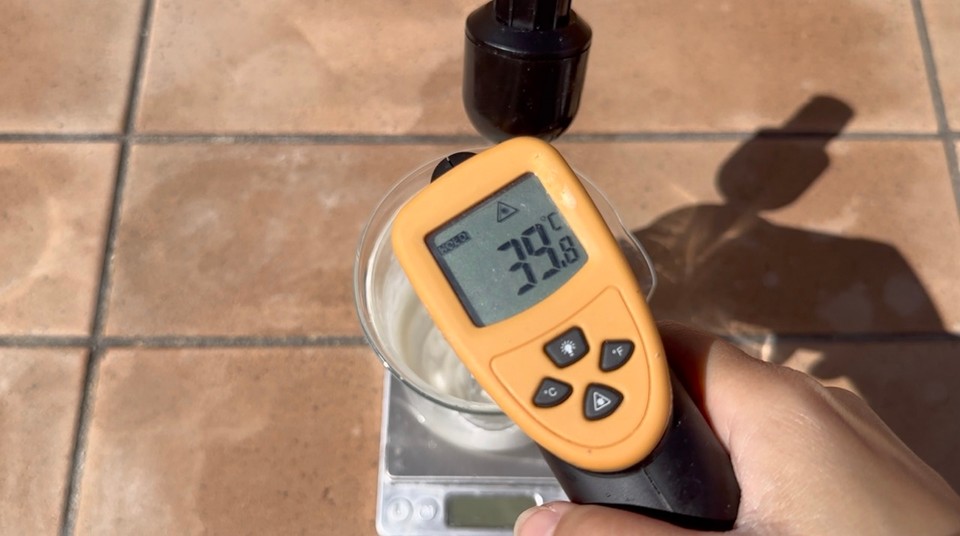
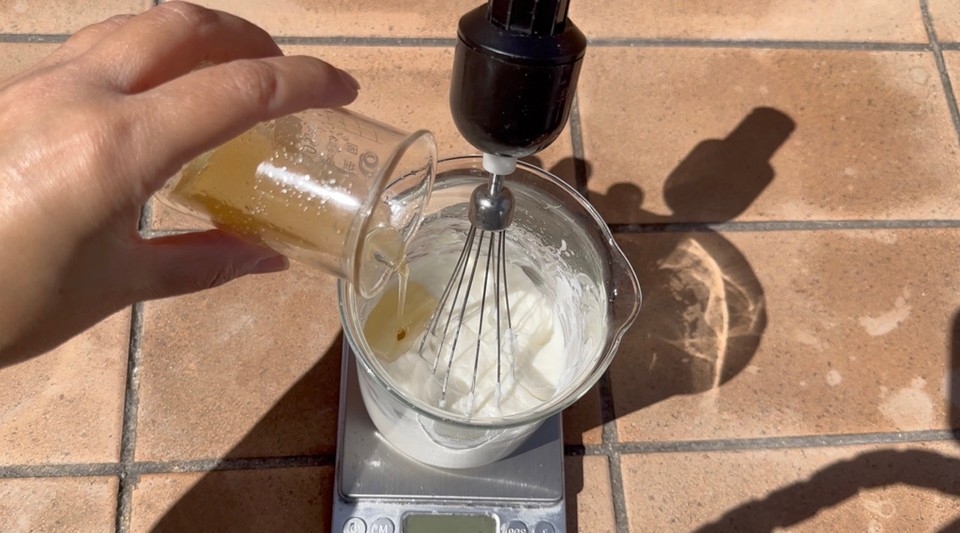
- Add phase D ingredients and mix to combine.
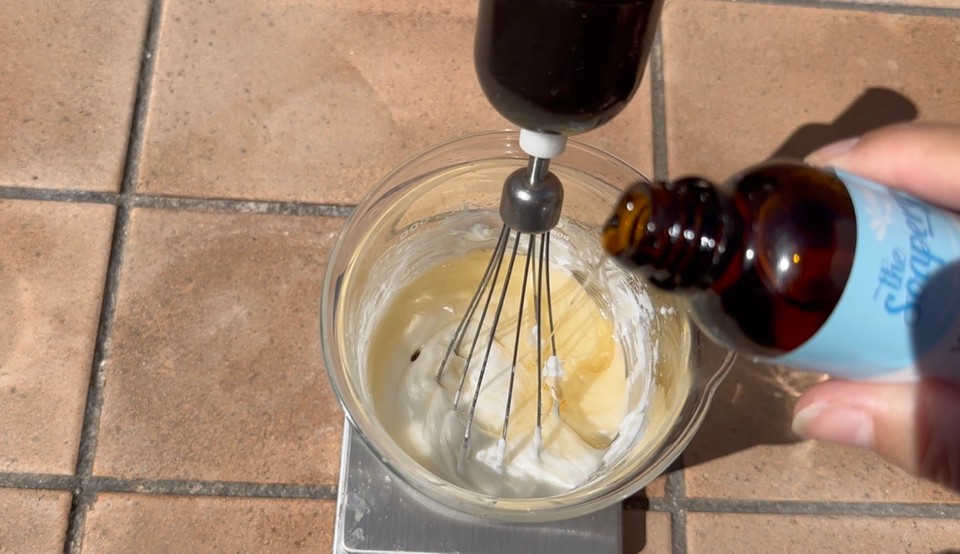
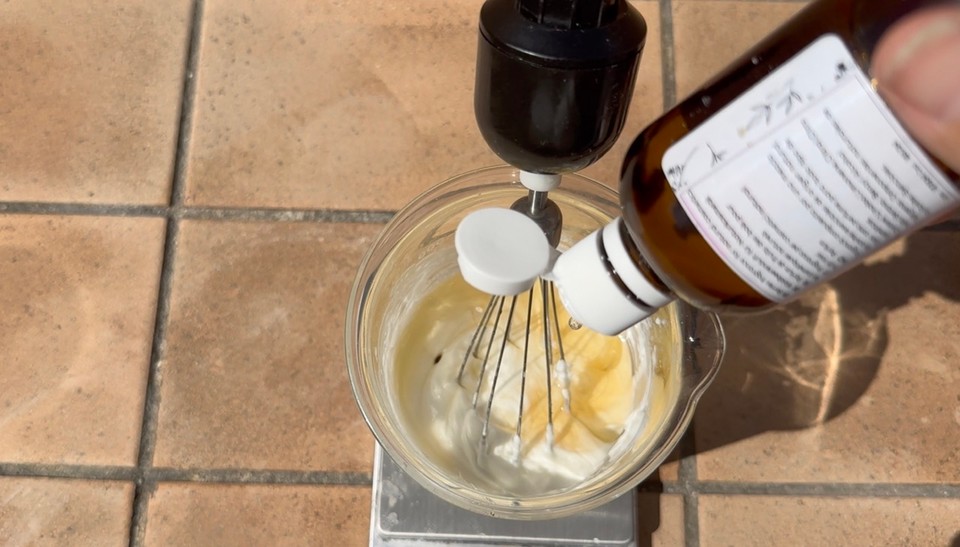
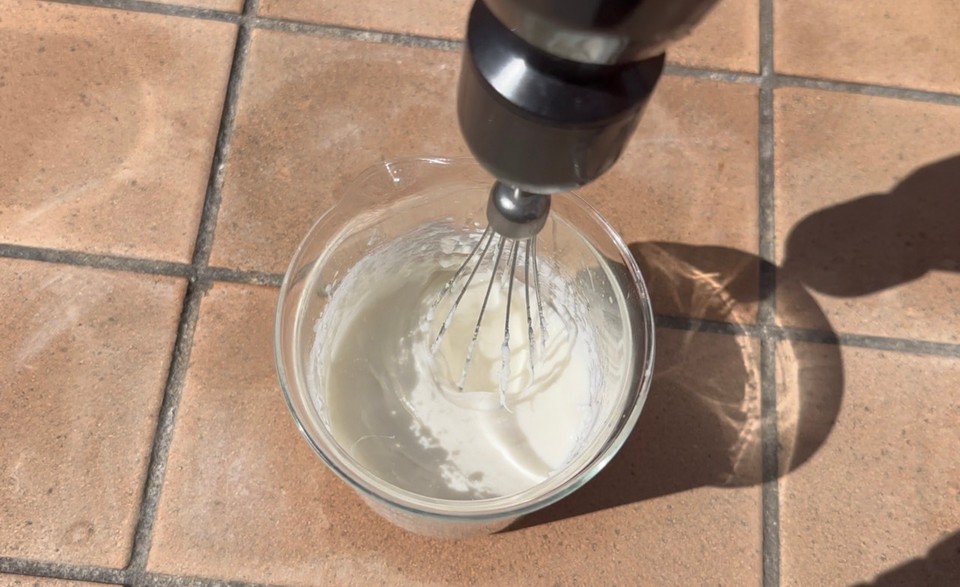
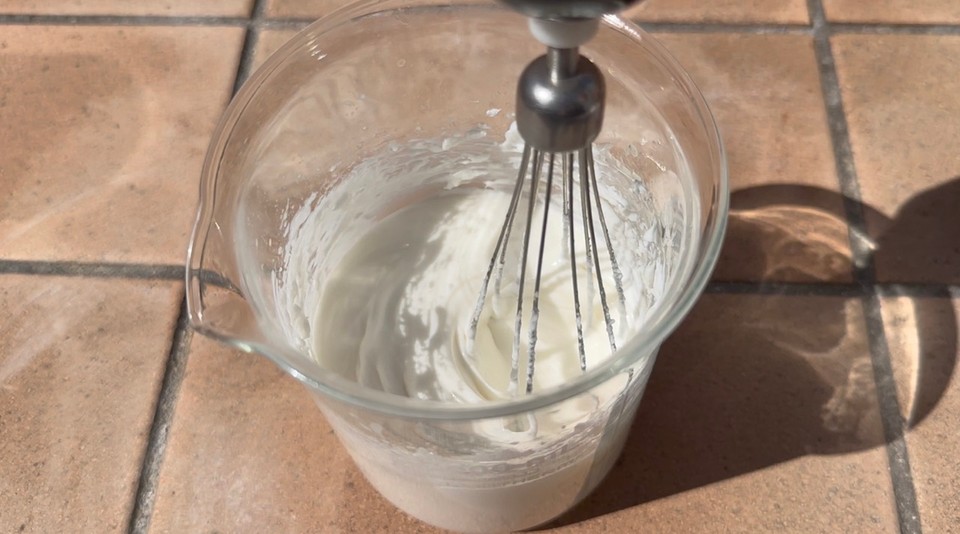
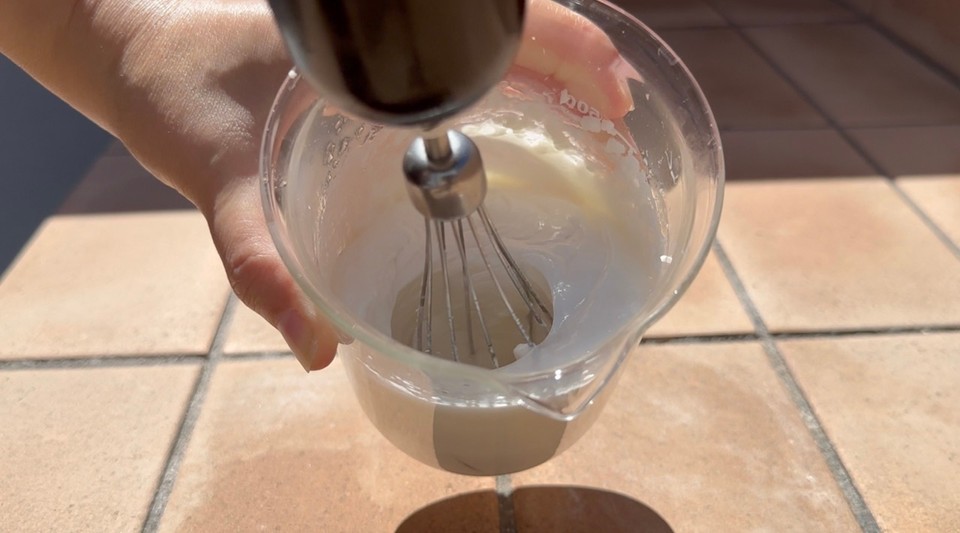

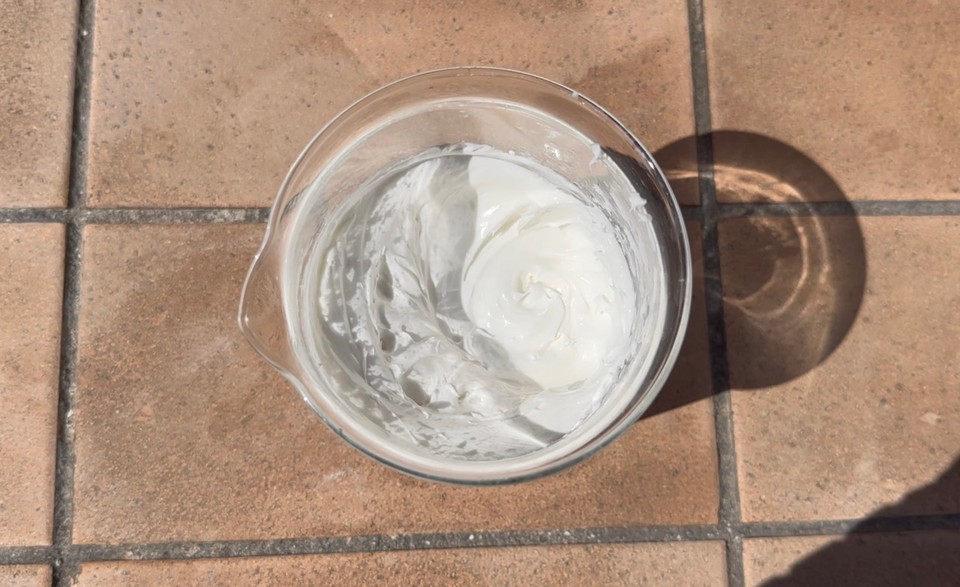
- Check the PH and adjust if necessary. Between 5 to 6 PH level is fine. To read more about PH adjustments, check this post here.

- pour into the container of choice and enjoy your skin food body butter.
